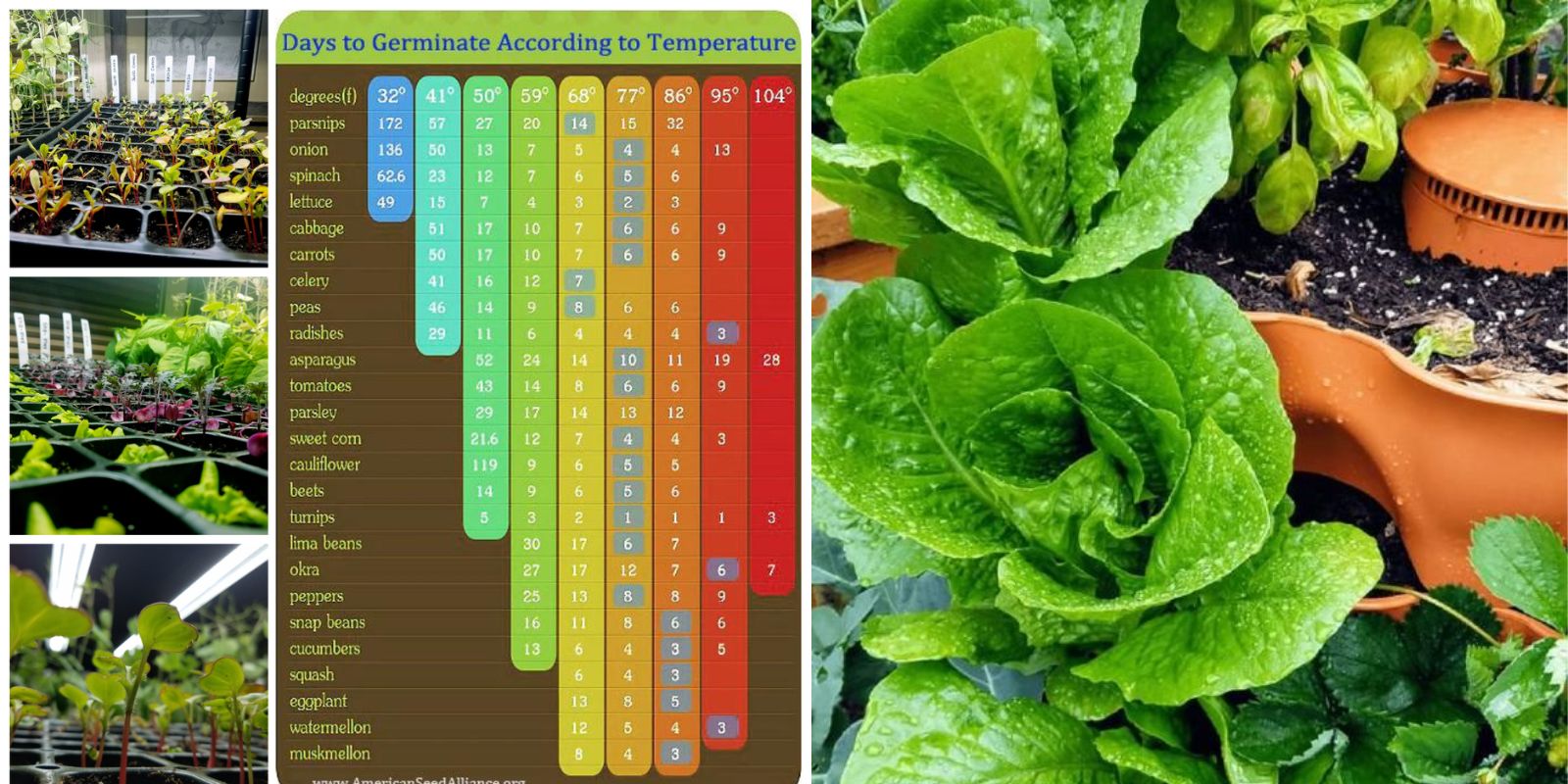Introduction
Creating a successful vegetable garden involves more than just planting seeds and watering them. To truly optimize your garden’s productivity and ensure that your plants thrive, it’s essential to understand and manage several key factors: vegetable planting schedules, hardiness zones, and germination temperatures. Each of these elements plays a crucial role in determining how well your vegetables grow and how much yield you can expect. This comprehensive guide will walk you through the essential aspects of planning your garden effectively, using tools and charts to make informed decisions.
1. Understanding Vegetable Planting Schedules
A well-planned planting schedule is vital for ensuring that your vegetables are planted at the right time to maximize growth and yield. Here’s how to create an effective vegetable planting schedule:
1.1 Research Ideal Planting Times
- Know Your Last Frost Date: The timing of planting largely depends on your local climate and frost dates. Your last frost date in spring and the first frost date in fall are crucial benchmarks. Check local gardening resources or extension services for this information.
- Consult a Planting Calendar: Utilize a vegetable planting calendar tailored to your region. These calendars provide monthly recommendations for sowing seeds, transplanting seedlings, and harvesting based on seasonal changes and local climate conditions.
1.2 Plan According to Vegetable Types
- Cool-Season Vegetables: Plants like lettuce, spinach, and radishes thrive in cooler temperatures. Start these early in the spring or late summer for a fall harvest.
- Warm-Season Vegetables: Tomatoes, peppers, and cucumbers need warmer temperatures. Wait until after the last frost to plant these in your garden.
1.3 Create a Planting Timeline
- Sow Indoors: For vegetables that need a head start, like tomatoes and peppers, sow seeds indoors 6-8 weeks before the last frost date.
- Direct Sowing: Some vegetables, like carrots and beans, can be sown directly into the garden soil after the threat of frost has passed.
- Transplanting: Plan your transplant dates based on the maturity of seedlings started indoors or purchased from nurseries.
2. Hardiness Zones: What They Mean and How to Use Them
Understanding your hardiness zone is crucial for selecting plants that will thrive in your local climate. Hardiness zones indicate the average minimum temperatures that plants can tolerate.
2.1 Finding Your Hardiness Zone
- Use the USDA Hardiness Zone Map: The USDA Plant Hardiness Zone Map divides North America into zones based on average annual minimum temperatures. Find your zone by entering your ZIP code on the USDA website or using local gardening resources.
- Consider Microclimates: Within your hardiness zone, microclimates may exist. Areas near buildings, fences, or bodies of water might experience slightly different temperatures.
2.2 Choosing Plants for Your Zone
- Select Zone-Appropriate Vegetables: Choose vegetable varieties that are recommended for your hardiness zone. This ensures that the plants can withstand local temperature extremes and grow successfully.
- Understand Seasonal Variations: In some regions, you might have the opportunity to grow different vegetables in both spring and fall. Research which vegetables can be grown in each season within your zone.
3. Germination Temperature Charts: Ensuring Optimal Seed Growth
Germination temperature is a critical factor in seed starting. Different seeds have specific temperature ranges that are ideal for germination.
3.1 Consult Germination Temperature Charts
- Find a Chart: Germination temperature charts provide the optimal soil temperatures needed for different vegetable seeds to sprout. These charts are available from gardening books, seed packets, and online resources.
- Understand Temperature Ranges: Most seeds have a range of temperatures at which they germinate best. For instance, lettuce seeds germinate well between 45-75°F (7-24°C), while peppers require warmer temperatures, around 70-85°F (21-29°C).
3.2 Monitor and Adjust Soil Temperature
- Use a Soil Thermometer: To ensure seeds are planted in optimal conditions, use a soil thermometer to check the temperature of the soil.
- Adjust Conditions as Needed: If soil temperatures are too low or too high, use methods such as soil warming mats, row covers, or shade cloths to adjust the temperature.
Tips for Success
- Stay Organized: Keep detailed records of your planting dates, hardiness zones, and germination temperatures. This will help you make informed decisions and adjustments in future gardening seasons.
- Experiment and Learn: Gardening often involves trial and error. Don’t be afraid to experiment with different planting times, vegetable varieties, and methods to find what works best for your garden.
- Stay Informed: Keep up with local gardening advice and updates on climate changes that may affect your planting schedule and plant selection.
- Adapt and Adjust: Be prepared to adapt your plans based on weather conditions and unexpected changes. Flexibility is key to successful gardening.
Conclusion
Mastering the art of vegetable gardening involves a blend of careful planning and understanding the specific needs of your plants. By creating a detailed planting schedule, utilizing hardiness zones to select the right plants, and monitoring germination temperatures, you set yourself up for a thriving and productive garden. Embrace these strategies to optimize your gardening efforts and enjoy a bountiful harvest. Gardening is a journey of learning and adaptation—take the time to plan, observe, and adjust for the best results. Happy gardening! 🌱🌟 #VegetableGardening #PlantingSchedule #HardinessZones #GerminationTips #GardenSuccess #GrowYourOwn #HomeGardening #SeasonalPlanting #GreenThumb #GardenPlanning

